Studies of Yarn in Motion is a collection of three experiments activating yarn crocheted into hyperbolic surfaces. They can be found on a wall in the hallway between three intersections on your way to the photo booth, maker space, and study rooms. We wanted to inhabit a busy space with a lot of traffic that would invite IDeATe creatives to take a moment and play with some of the experiments while on their way. We wanted to share the motions we found captivating while playing with these textiles and create motion that could be experienced in under 5 minutes. The materials and textures were chosen to represent the kind of craft and explorations that can come from maker spaces. As Olivia pointed out, these studies really speak to the exploration and craft that happens at IDeATe. Another happy accident we found inhabiting this space were the woven pieces hanging opposite of the three studies. Having these pieces face one another really speaks to the breadth of soft textiles, one in motion and the other weaving a visual narrative.
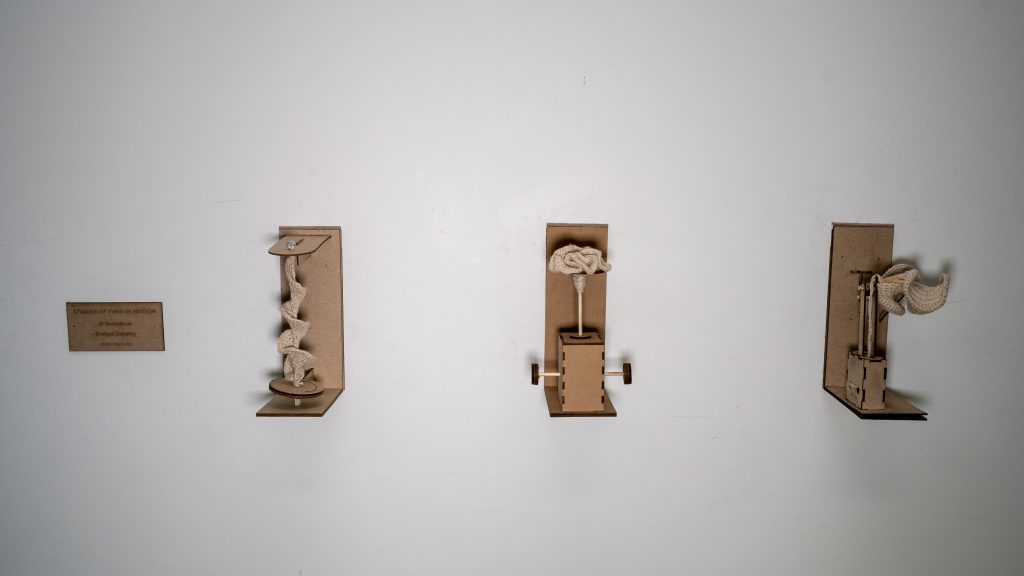
In each of these studies we wanted to invite the participant to explore the motions we found captivating while playing with the crotchet yarn. We chose three movements and carefully crafted the moments to share by recreated mechanisms that would do what our hands could do: a show and tell without us to be there and show it. While these motions are controlled, we wanted the language of what they are made of, the process board, and the location within ideate to invite students to research and make their own if interested. Posted on the research board nearby are printed DIY slips and research papers that we mentioned. We found quite a lot of existing research on modeling hyperbolic forms through crochet, and a good amount of history attached to the use of craft (traditionally an undervalued ‘women’s’ skill) in modeling complex mathematics & biology. These three studies are a conclusion of what we found interesting, while also leaving room for more.
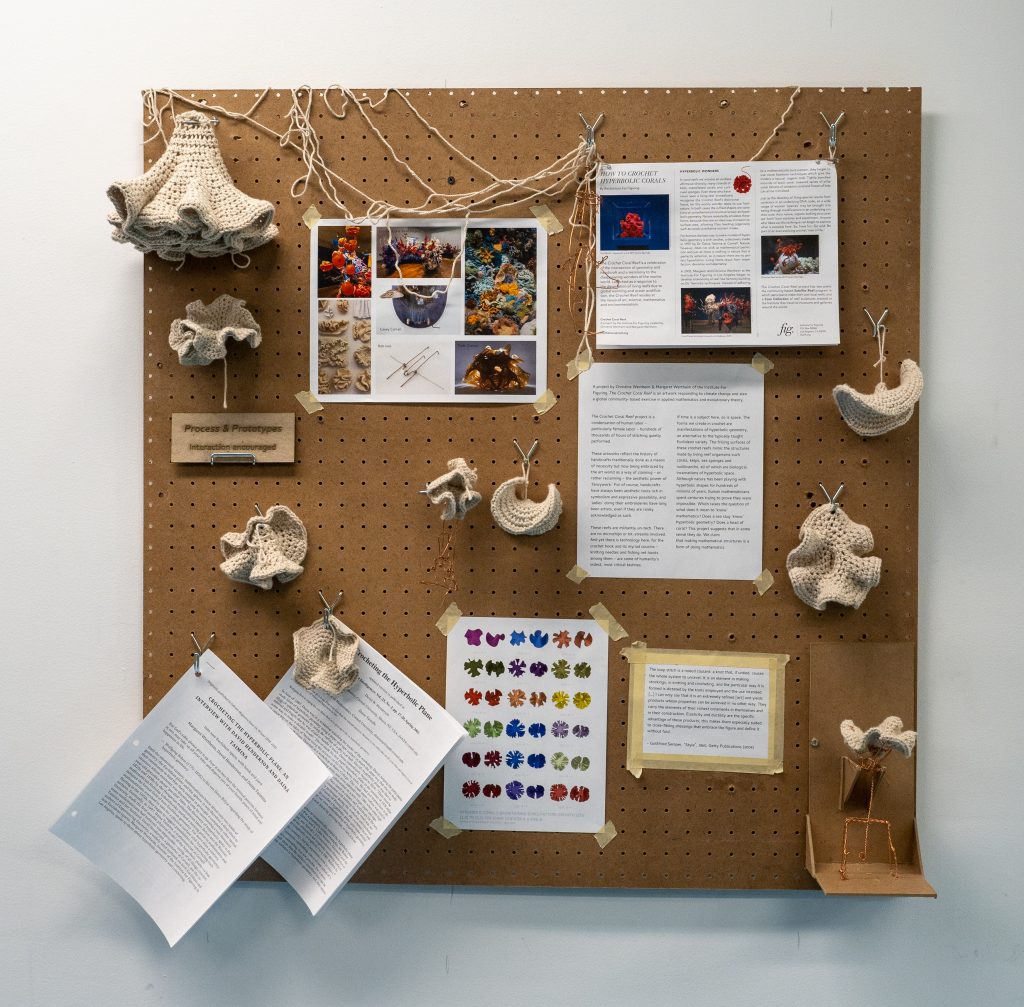


If we could use a metaphor for this process, it would look like rivers converging into a delta. The process was organic in the way that we explored many different avenues of how to bring the space and the crotchet pieces alive. Some of that exploration looked at how to activate the crotchet yarn at different scales, different locations, and through different activations. It was a process that allowed both of us to explore new things while bringing in skills we already had. It was a difficult to narrow down on an idea as there were so many possibilities through the crocheted yarn, however, once we decided to pursue creating motion studies we were able to make more headway. The process of making each study was about iteration. While we were really excited to work with wire and made many attempts to get it to create the motion we were looking for, it was not creating results quick enough as we did not have the skill and knowledge to make it into a final prototype. Those skills did not go unused, as they greatly influenced the laser cut parts and the end mechanisms. The largest learning from this is when deadlines are very short it may be best too work with skills one already has and later incorporate the new (i.e. wire mechanisms).
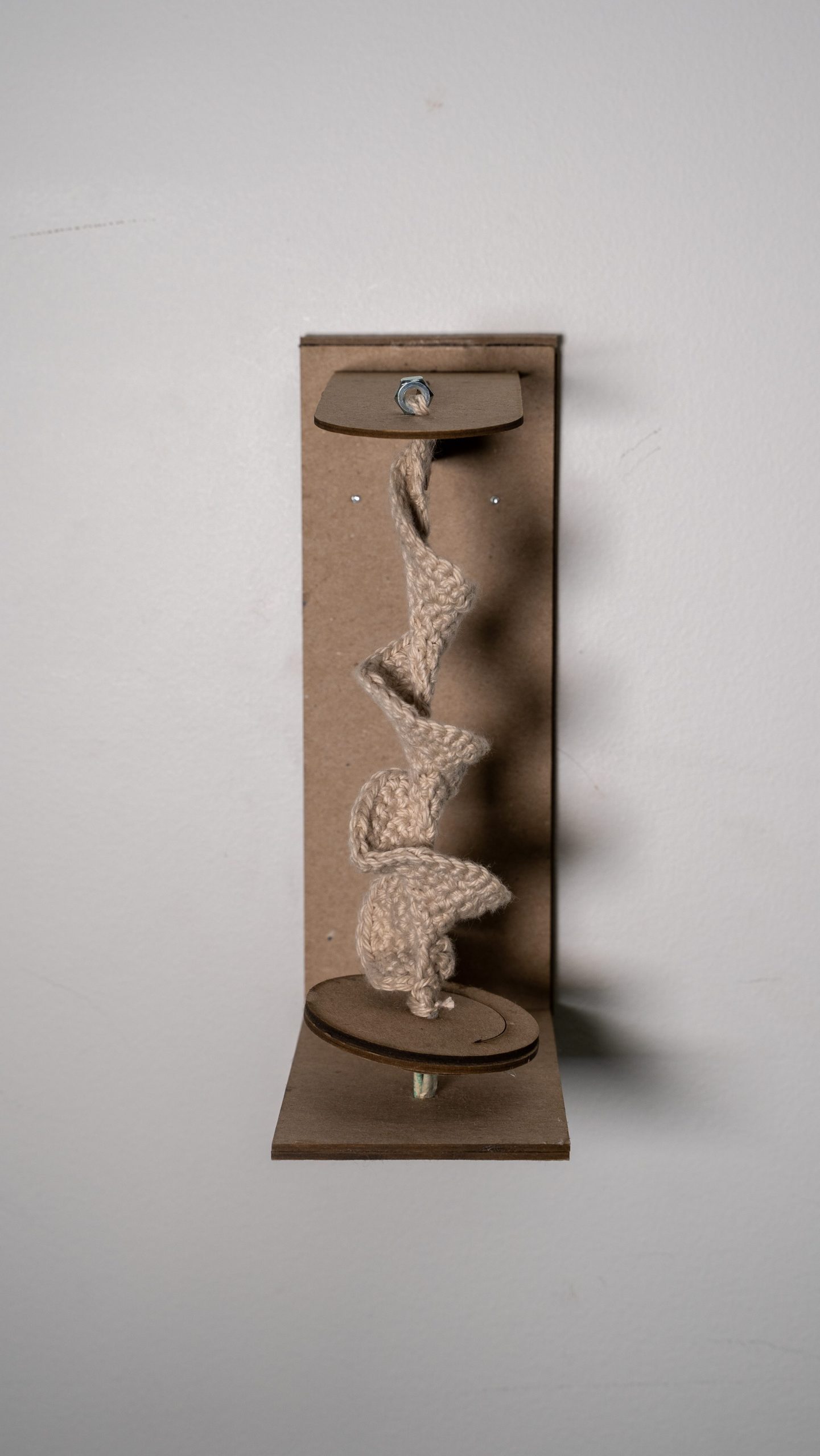
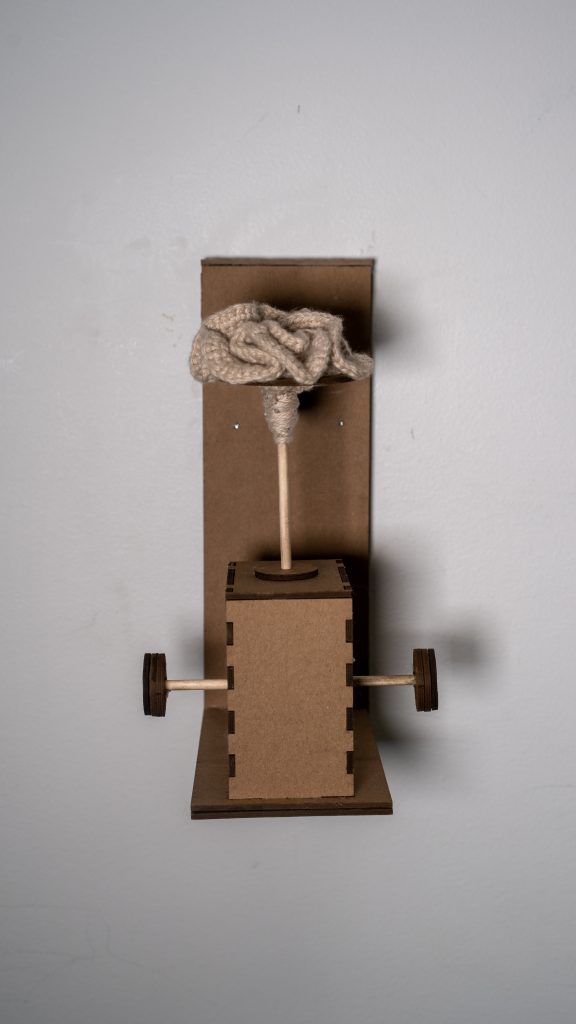
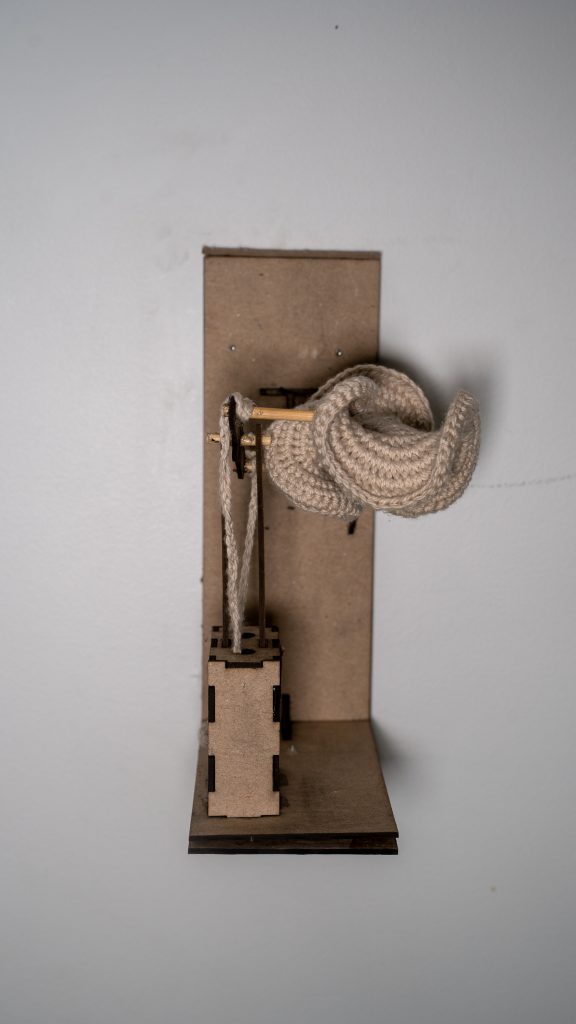
Overall, looking back at the pieces what could be enhanced is the motion of a few could have a wider range of motion. In addition, there could be another attempt to get people to touch it as the arrows we added did not help as much as we thought to get tactile experiences. What worked really well was having the collection of three studies each being a little different from the other, having the mechanics hidden, and the location. It was lovely to watch people be mesmerized with the movements just as we were. There were even a few people who thought the process board was a great way of understanding how these shapes were made.
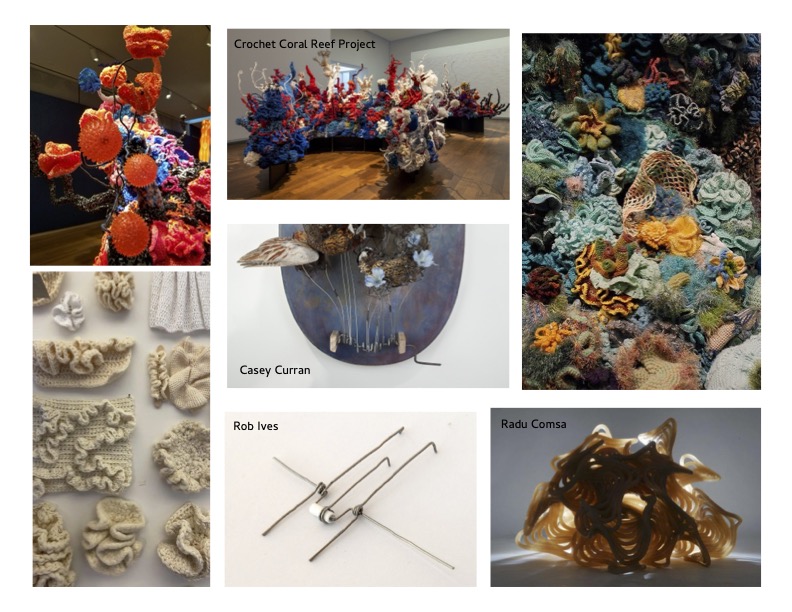
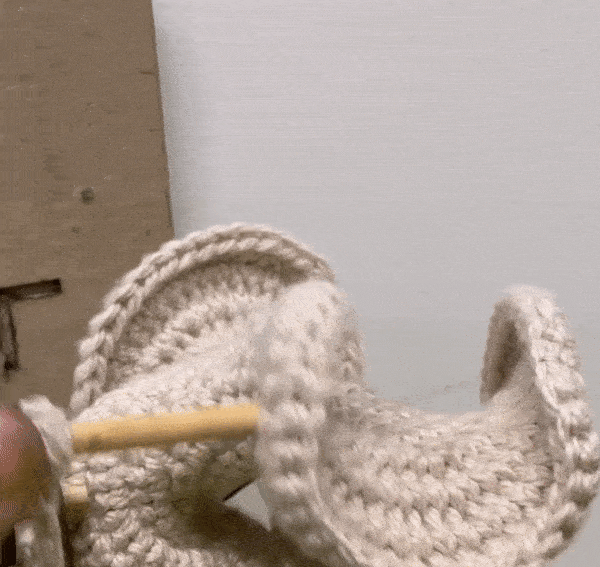
Leave a Reply
You must be logged in to post a comment.